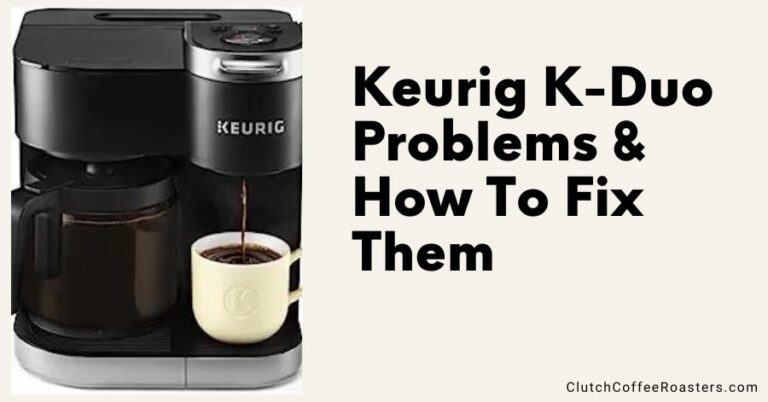This article is a brief introduction to various coffee brewing methods. We have edited and re-published this article from the good folks at Coffee-Brewing-Methods, where you can find more information about brewing and equipment. Coffee-Brewing-Methods aims to help readers understand the various methods of preparing coffee and guide them in brewing equipment choices.
Try as many coffee brewing techniques as you want and don’t stop at the first one. Experiment with a brewing method and tweak it for yourself. Part of the fun of brewing coffee is adjusting your recipe and method to personalize your cuppa joe and get it just the way you like! Changing the water temperature, grind size, timing, and other things may give you the flavor you have been seeking.
Almost all of the coffee brewing methods described here require some level of preparation and technique, from very basic to very involved. A little online searching will reveal plenty of tutorials and videos to help you learn.
Espresso
Espresso is prepared by pushing hot water at high pressure through a layer of compacted ground coffee contained in what is called a porta-filter. Espresso is a very concentrated coffee with a lot of body, aroma, and flavor. It contains a lot of coffee oils and solids. The most distinctive features of espresso are the foamy layer on top (crema) and the low volume of the drink. Pulling the perfect shot of espresso requires training, knowledge, and practice, but don’t let that stop you from brewing your own whenever you get the chance.
Contrary to popular belief, you do not have to use “espresso blend” or “espresso roast” coffee when brewing espresso. Espresso is just a brewing method, like a coffee press is a brewing method. You can use any coffee you want in an espresso machine. Clutch Kickstart Espresso Blend makes a great cup of espresso but our Sumatra Lintong does, too.
For a brief tutorial see http://coffee-brewing-methods.com/how-to-brew-espresso-perfect-shot/
Turkish Coffee
Turkish coffee is a method of infusing very finely ground coffee in nearly boiling water. What is very specific to the Turkish brewing method is the grind size which is the finest possible, almost a powder. There are no electrical Turkish coffee grinding machines for home use but the manual mills work perfectly. Turkish coffee has the fullest body of all brewing methods. If you like clear coffee, stay away from it—It is thick, muddy, and delicious!
For a brief tutorial see http://coffee-brewing-methods.com/how-to-make-turkish-coffee/
Electric Drip Coffee
Drip coffee or filter coffee is the most popular coffee brewing method in North America. An electrical appliance heats the water, pumps it from the water reservoir, and sprinkles it over the ground coffee beans. The brew is strained through a paper filter, or a metal or plastic mesh. The coffee from a drip brewer is clear and clean, with a high ratio of caffeine extraction. There are quite a few different brands of drip machines, ranging from affordable kitchen brands costing $30 to high-end specialty brands costing hundreds of dollars. High end machines may have some adjustability so that you can fine tune the brew just the way you like.
For a brief tutorial see http://coffee-brewing-methods.com/drip-coffee/
Manual Drip (Pour-Over) Coffee
Pour-over is basically the same method as electric drip but you do it all by hand. Heat the water in a kettle, put your ground coffee in the pour-over device with the filter, and then slowly pour the water over the ground coffee. There is a technique to it and it takes a little practice but you can get a truly divine cup of coffee by pour-over. One of the advantages of pour-over is you control every step and can adjust any step to change the brew. This is a very easy method to experiment with.
For a brief tutorial see http://coffee-brewing-methods.com/how-to-make-pour-over-coffee-at-home/
Coffee (French) Press
The coffee press, or press pot, is a very simple coffee brewing device with a beaker and a plunger/filter. The preparing technique consists in pouring hot water over ground coffee and letting it steep for a few minutes. After steeping the plunger/ filter is pressed down to push the spent grinds to the bottom of the beaker, leaving your brew at the top. Press coffee has a medium body, less than espresso but more dense than drip. The aroma and flavor of press coffee can be intense but, like with pour-over, it is easy to adjust any step of the process to get just the cup you like.
For a tutorial see https://www.craftcoffee.com/how-to-make-coffee/french-press-brew-guide
Moka Pot (Sometimes Called Stove-Top Espresso)
The Moka pot uses steam pressure to push water through a bed of ground coffee similar to the espresso method but at much lower pressure. The pressure in a Moka pot is about 1 Barr compared to a real espresso machine at 9 Barr. The coffee made in a Moka pot, as you would expect, is very bold and resembles espresso but typically lacks crema and it has much less oils. It is a good espresso alternative and buying a Moka pot is considerably less expensive than buying an espresso machine.
For a tutorial see https://www.hilinecoffee.com/moka-pot-coffee
Cold Brew
Cold brew is lower in acids that other methods and is the favorite way of preparing coffee for people with stomach problems. If regular, hot, coffee brews upset your stomach, cold brew is definitely your choice. The brewing method implies steeping ground for extended periods of time in cold or room temperature water (12 to 36 hours) and then straining and serving. Because it takes so long to brew, people prepare large batches and store it in the refrigerator for several days.
While a commercially available cold-brew maker may be helpful it is certainly not necessary. Anybody can make cold-brew with a coffee press or even a canning jar. It really is just coarsely ground coffee soaked in cold water for 12-plus hours and then strained.
For a tutorial see http://www.americastestkitchenfeed.com/do-it-yourself/2011/08/how-to-make-cold-brew-coffee/
Single Serve Brewing
The Keurig and similar machines are basically little electric drip machines that push the water through the cup with a little pressure. The hallmark of this method is the convenience and minimum effort required. The tradeoff is generally a mediocre tasting cup of coffee. But then, you can’t have high expectations of a brewing method that only requires you to put a pre-filled cup in a holder and push a button. One way to get a little more out of a single serve machine is to use a manual-fill cup and freshly ground, quality coffee.
Aeropress
The Aeropress is a manual coffee device that allows you to use hand pressure to brew a cup. The method involves a two steps process, with steeping followed by manually pushing the brew through the coffee grounds. Some people use Aeropress to make strong coffee similar to espresso while others use it to make “regular” strength coffee. As with the pour-over method, this is completely manual and you have a lot of opportunities to fine-tune to your preference.
For a tutorial see http://www.thekitchn.com/how-to-make-aeropress-coffee-two-ways-cooking-lessons-from-the-kitchn-210815






